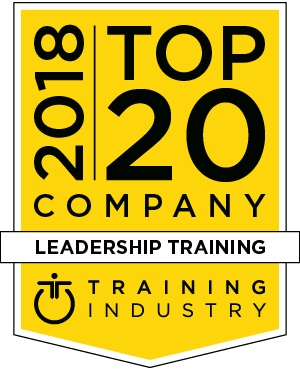You’ve put together what you believe is a solid training program. You’ve designed engaging content, planned activities, and allocated time for everyone involved. But after the session, you’re left wondering: Did it make any real impact? Was it worth the effort, time, and resources?
If you’ve been in this position, you’re not alone. It’s a common challenge in the world of Learning & Development (L&D). But the reality is, training doesn't need to be complicated or drawn-out to be effective. The key is proving that it made a difference, even if it feels like you’re starting from scratch with leadership support.
So, how do you prove the ROI of training, especially when it can be hard to quantify and even harder to get buy-in from management? Let's explore some practical ways to demonstrate that training is a worthwhile investment.
The Challenge: Proving the ROI of Training
Training is an investment. But how do you prove that it’s paying off?
The challenge lies in demonstrating that the time and resources put into training programs directly lead to positive business outcomes. For L&D managers, showing ROI is about more than just tracking attendance or completion rates; it’s about connecting the dots between training and the tangible impact it has on your team and the company’s bottom line.
Here’s the catch: you can’t just measure ROI in one single metric or expectation. ROI comes in many forms—improved productivity, lower turnover, increased customer satisfaction, or enhanced employee engagement. But to prove this to senior leadership, it’s essential to collect meaningful data and track it consistently.
Aligning Training with Business Goals
One of the best ways to prove ROI is by tying training to specific business objectives. Whether the company is looking to increase sales, improve customer service, or reduce operational costs, aligning your training programs with these goals makes it easier to measure success.
Example: If your company is focusing on improving customer service, then it’s crucial to train your team in ways that directly impact customer interactions. You could then track customer satisfaction scores or Net Promoter Scores (NPS) before and after the training to see if there’s an improvement.
In this case, it’s not just about training for the sake of it—it’s about developing your team’s skills in ways that push your company toward its goals. This makes it much easier to track the success of the training.
Measuring the Impact: Concrete Metrics for Training ROI
So, how do you measure if your training is actually moving the needle? Let’s break down some key ways to track the success of your training initiatives.
1. Performance Metrics
The most straightforward way to measure the success of training is by looking at key performance indicators (KPIs) relevant to the skills or knowledge the training aimed to improve. This could include sales numbers, customer satisfaction ratings, or productivity levels.
For example, if you’re running sales training, you can track changes in sales figures, conversion rates, or even lead generation metrics after the training. These performance metrics can be compared before and after the training to identify if there’s been a noticeable impact.
2. Employee Engagement and Retention
Another effective way to measure training ROI is by looking at employee engagement and retention. Investing in professional development shows employees that you’re committed to their growth, which can lead to higher job satisfaction and reduce turnover.
If employees are more engaged and feel that their skills are growing, they are more likely to stay with the company long-term. Tracking turnover rates before and after the implementation of training programs can help gauge if your efforts are paying off.
3. Post-Training Assessments
Post-training assessments provide another way to track the success of your programs. These assessments can measure what employees have learned and how much they’ve retained.
For example, after a training session, you could ask employees to complete a quick quiz or assessment. If they score higher than they did before the training, it’s an obvious indicator that they’ve absorbed the material.
Beyond assessments, you can also use follow-up surveys to ask employees how they are applying the skills learned in their day-to-day work. This provides valuable feedback and helps you see if the training is being used effectively.
4. Behavioral Changes
Tracking how employees implement the skills they’ve learned is crucial for understanding the effectiveness of your training. This often requires feedback from managers and supervisors, as they can provide real-time insights into how employees are performing post-training.
For example, after leadership training, you could ask managers to evaluate whether their team members are demonstrating better communication, problem-solving, or decision-making skills. This feedback loop is critical in understanding the true application of training.
Long-Term Impact: Training and Business Results
Training might not always show immediate results, but that doesn’t mean it’s not valuable. Sometimes, it takes time for the impact of training to become apparent. A key to measuring training ROI is tracking long-term outcomes.
Let’s say you’ve implemented a customer service training program, and initially, you see only small improvements in customer satisfaction scores. However, over time, you notice that customer complaints decrease, repeat business increases, and your NPS scores rise. This long-term impact shows the true value of training—and makes it easier to prove the ROI to leadership.
Building Support for L&D in Challenging Times
Training programs require resources. When leadership is focused on short-term gains, proving the value of training can be challenging. But that’s where your role as an L&D manager becomes essential. By aligning your training programs with the company’s business goals, using clear and actionable metrics, and tracking long-term results, you can demonstrate the true ROI of learning and development initiatives.
Here’s the truth: When you can show leadership how training drives real, measurable business results, it becomes easier to build a case for ongoing investment. You become not just an advocate for your team’s growth but a key driver of business success.
Making Training Work for You
Training is an investment, and like any investment, it needs to show a return. By focusing on the metrics that matter—performance, engagement, retention, and business outcomes—you can prove the value of L&D and show that it’s not just a cost but a strategic lever that drives business growth.
So, the next time you roll out a training program, think about how you can measure its impact in the long run. Align it with company goals, track relevant KPIs, and use real-world examples to show how your team’s development contributes to success.
The ROI of training isn’t just a number on a spreadsheet—it’s the measurable difference it makes in how employees perform, engage, and contribute to the company’s goals. Let’s not just train for the sake of it—let’s train for real, lasting impact.


















